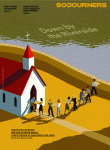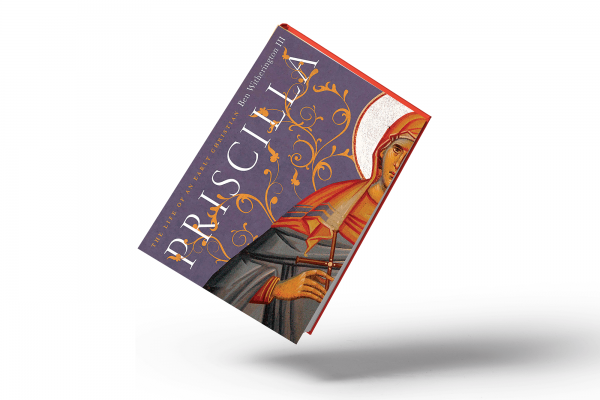THE NOVEL BEGINS with a nightmare from the 10th year of Nero’s reign, 64 C.E. “Rome was burning, would not stop burning ... the screams of adults and children, burning.”
Priscilla, or Prisca, is just waking up from a bad dream. An early Christian believer from “Roma,” wife of Aquila, a leatherworker like “Paulus,” and a house church leader (Acts 18:18-28; Romans 16:3-5; 1 Corinthians 16:19), Prisca is now a widow with an adopted daughter. The nightmare encourages her to record her life story.
Author Ben Witherington III is a professor of New Testament at Asbury Theological Seminary and a prolific writer. With his imagination, New Testament mentions of Prisca, and knowledge of the culture and politics of the Roman Empire, Witherington creates a dramatic account of the first century church, as told by an early leader.
He first portrays Prisca as a young freedwoman adopted by her childless mistress. She is named Priscilla after her adoptive mother and given Roman citizenship. The elder Priscilla was a Jewish adherent, so devout that she traveled to Jerusalem for the feast of Shavuot (in Greek, “Pentecost”), taking her adopted teenage daughter with her. By coincidence, the festival that year ushered in the descent of the Spirit and the birth of the church. Thus Prisca became part of the Jesus movement from the beginning.
Having studied Roman history, I am impressed by the details Witherington includes. Every possible reference from the New Testament (and a few extracanonical sources) are woven together in this politico-cultural context to round out characters Prisca would have known personally or heard about through her many contacts.
But Witherington also makes choices some scholars would question. Prisca must be 80 years old to cover this historical distance, but very few women in that place and time lived that long. Other details may also raise eyebrows:
1) Witherington has the gospel writer Luke travel with Paul. (While this assertion exists in tradition, it is disputed by many scholars.) 2) When Paul arrives in Rome in chains (Acts 28:16, 30), he is placed under house arrest in Prisca and her husband’s home! (This seem highly unlikely in Nero’s Rome.) 3) While there, Paul writes letters we call Philippians, Colossians, Ephesians, and Philemon. (Because of geographical distance, Philippians and Philemon were likely written during earlier incarcerations, and Paul probably did not write Ephesians.) 4) Paul is later freed and goes to Spain, where he writes to Timothy and Titus. (Most scholars assume Paul was executed after his house arrest and did not write 1 Timothy and Titus.)
Nevertheless, I recommend Priscilla for its writing style, creativity, historical research, and focus on a worthy church leader. We misunderstand much when we read our scriptures “on the flat” without the cultural depth they deserve.

Got something to say about what you're reading? We value your feedback!






